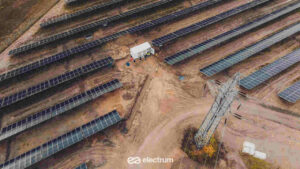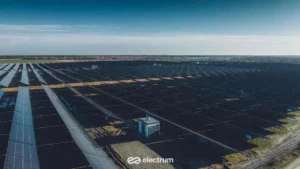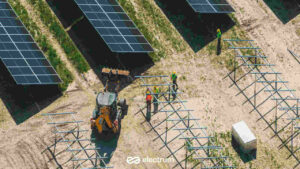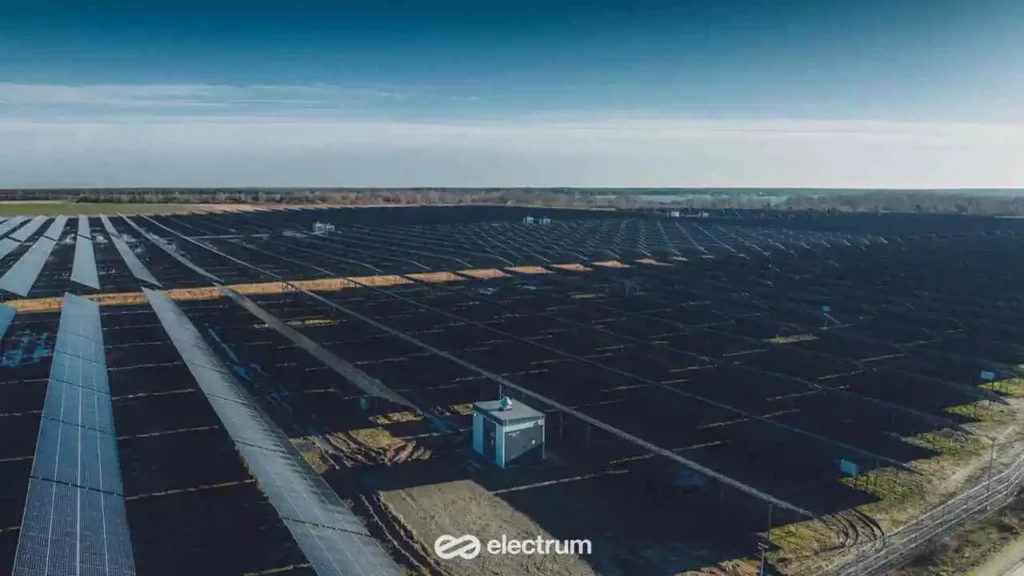After years of stagnation, onshore wind energy in Poland may be ready to move forward again. On March 21, 2025, the Council of Ministers adopted an amendment to the Act on Wind Power Plants Investments*—commonly referred to as the “distance law amendment”—which includes, among other things, the repeal of the 10H rule and the introduction of a 500-meter minimum distance from turbines to residential buildings. This could mark a breakthrough for the renewable energy sector—economically, socially, and environmentally.
- What do these changes mean in practice for renewable energy project development?
- What are the real challenges and opportunities for wind projects?
- What administrative changes will impact solar project development?
- Which renewable technology receives more acceptance from municipalities and communities?
We discuss these issues with Marcin Kretuński, an expert at Electrum Ventures, a company developing renewable energy projects in Poland. Electrum Ventures is part of the Electrum Group, leveraging its long-standing experience in EPC and O&M, and complementing them with the project development phase—from lease agreements to Ready-to-Build (RtB) status.
Interview by Magda Staniszewska.
*The first reading took place on April 3, 2025, and on April 4, 2025, the Sejm referred the bill to further work in parliamentary committees.
The legal landscape for wind energy in Poland is changing before our eyes. How do you assess the amendment and the planned distance reduction from 700 m to 500 m?
Marcin Kretuński: This is a breakthrough moment that has been delayed several times. The 10H rule introduced in 2016 effectively halted the development of new wind farms in Poland. Simply put, there was no land available to develop them—because the taller the turbine (measured to the tip of a vertically positioned blade), the greater the required distance from buildings.
Multiplying the turbine height by 10 meant distances of up to 1.5 km for 2 MW turbines, and over 2.5 km for 7 MW turbines. The 10H rule made it impossible to complete many projects that hadn’t reached RtB status before the law was enacted.
It’s worth noting that 500 meters is the minimum distance. In practice, this distance may still be 750 or even 1,000 meters.
I hope the adoption of this amendment will, in the coming years, significantly increase the share of wind-generated power in Poland’s energy mix.
What does the 500-meter minimum distance mean for ongoing wind projects?
MK: We must mention the Local Spatial Development Plan (MPZP), which is drafted based on specific parameters. It defines the location, maximum number of turbines, and their dimensions—such as height and rotor diameter.
Currently, turbines can be placed at a minimum of 700 meters from residential buildings. Properties are first secured based on this parameter before submitting a request to prepare an MPZP. For all procedures initiated before the law is amended, the current version still applies.
A 700 m vs. a 500 m buffer results in entirely different projects. You can’t simply add more turbines—the spacing between turbines must be maintained. Overcrowding would reduce efficiency and the energy fed into the National Power System.
We are now facing a dilemma: Should we start projects with the 700 m rule—likely resulting in fewer turbines—or wait for the amendment and plan for 500 m? It’s a tough decision because timing is critical in project development.
See: Wind Farms in Electrum’s portfolio
It seems the amendment goes beyond abolishing 10H. What else stands out to the industry?
MK: Yes, the changes go beyond that, mainly focusing on distance regulations. The amendment introduces a 500 m minimum distance from Natura 2000 areas (important for bat and bird habitats) and a 1,500 m minimum from national parks.
It also introduces the 1H rule from national roads (based on turbine height) and allows exemptions from the 3H rule from high-voltage lines, subject to operator approval. There will also be a ban on turbine placement in MCTR and MRT military airspace zones.
Another concept introduced is repowering—well-known in Western Europe—which allows modernization of existing farms by replacing older, lower-capacity turbines with newer, higher-capacity ones.
Aside from the amendment, what other factors impact wind project development in Poland?
MK: The wind investment act isn’t the only regulation that affects project development. Everything depends on laws or regulations.
Wind farm development is inherently long-term. Key time-consuming stages include MPZP, environmental decisions (DŚU), and grid connection terms (WZ).
MPZP procedures are complex, with public consultations often repeated.
The DŚU requires a detailed environmental impact report, including a year-long biodiversity inventory.
WZ decisions are another challenge—there is a high rejection rate from operators.
Announcements of administrative simplifications bring some optimism—these changes are essential.
What does the year-long biodiversity inventory involve?
MK: This is required when an environmental impact report is mandated. It spans a full year to determine species types and populations within the project area. This data is crucial to assess the project’s environmental impact and identify mitigation measures.
This is a very specialized area, and we ensure that qualified experts handle it, including ornithologists, chiropterologists, herpetologists, entomologists, and mammalogists.
What about PV projects? Are changes coming here as well?
MK: Yes, solar farms will also be affected by a spatial planning law amendment. Unlike wind farms, PV farms are still developed based on WZ decisions—which is set to change. When General Plans come into force, PV farms will also require MPZP.
It is highly likely that the effective date for the General Plans will be postponed from the originally planned January 1, 2026, to June 30, 2026. This proposal has received strong support from local municipalities. The General Plan is a completely new type of planning document intended to replace the Study of Conditions and Directions of Spatial Development. However, unlike its predecessor, it will have the status of a local law.
Municipalities have already begun the procedures to develop these plans, but the process is complex and time-consuming, often requiring the involvement of external experts. It also involves reviewing (either approving or rejecting) hundreds or even thousands of submissions to the general plan. The challenge is compounded by the fact that, alongside the work on General Plans, municipalities continue to process Local Spatial Development Plans (MPZP) and issue zoning decisions (WZ).
What if municipalities don’t prepare the General Plan in time?
MK: It is highly likely that the deadline for implementing General Plans will be postponed from the originally planned January 1, 2026 to June 30, 2026. This proposal has been well received by municipalities. The General Plan is a completely new planning document intended to replace the Study of Conditions and Directions of Spatial Development, but unlike that document, it will have the force of local law.
At that point, no investment would be able to pass the planning stage, and consequent9ly, would not proceed to the next phase of the development process.
This paralysis would not only affect renewable energy projects (RES), but all types of investments, including residential construction, which currently benefits from relatively easy access to zoning decisions (WZ). In many cases, applicants can obtain WZ decisions in practically any desired location.
This is precisely what the General Plan will significantly change. For areas not currently covered by Local Spatial Development Plans (MPZP), municipalities will designate infill development areas, within which residential construction will be allowed to continue. In other words, WZ decisions for residential development will only be possible within these designated areas.
This change is very beneficial for wind project development—it spatially defines the areas where further residential development can occur. As a result, it eliminates situations in which a wind farm project is blocked due to a single house standing in the middle of nowhere.i
Municipal cooperation is now the foundation of renewable energy project development. Does the amendment to the distance act change anything in this context?
MK: Currently, municipalities must give their approval for exemptions from the still-valid 10H rule and define the minimum distance, which—as I mentioned—doesn’t necessarily have to be 700 meters. This reveals which municipalities are open to wind energy development.
The amendment certainly strengthens our arguments during discussions, but that doesn’t mean every project will succeed. Unfortunately, both municipalities and their residents sometimes carry negative experiences from the past—especially in the context of wind farms. This includes lease agreements made for projects that were never realized due to the introduction of the 10H rule in 2016. As a result, we often encounter landowners who have lost faith in renewable energy and in the idea of leasing their land for such investments.
Municipalities today place a strong emphasis on public satisfaction. Arguments often center on the impact of wind turbines or large-scale PV installations on the environment and landscape. While renewable energy projects are a sign of progress, their integration into the landscape isn’t always widely accepted.
For us, it’s crucial to build dialogue—not just with local authorities, but also with the local community. We go beyond the legislative requirements in this regard. Transparency in our actions is absolutely fundamental. If we know that local authorities or residents are strongly opposed, we don’t initiate a project, because we understand that projects without government support and community acceptance simply won’t happen.
Relations with municipalities are now the foundation of RES project development. Has the amendment to the distance act changed anything in this regard?
MK: Currently, municipalities must consent to deviating from the still-applicable 10H rule and then define the minimum distance, which, as I mentioned, does not necessarily have to be 700 meters. This shows which municipalities are open to wind energy.
The amendment certainly strengthens our position in discussions, but it doesn’t guarantee success for every project. Unfortunately, both municipalities and their residents sometimes carry negative past experiences—especially concerning wind farms. For example, lease agreements signed for projects that were never realized due to the introduction of the 10H rule in 2016. In practice, this means we often meet many dissatisfied landowners who have lost trust in RES and the idea of leasing their properties for such purposes.
Right now, municipalities place a high priority on public satisfaction. Concerns are frequently raised about the environmental and visual impact of wind turbines and large-scale photovoltaic installations. RES projects represent innovation, but their harmonious integration into the landscape is not always accepted.
It is crucial for us to establish dialogue not only with local authorities but also with the local community. In this area, we go beyond what the law requires. Transparency is our absolute foundation. If we know that the authorities or the community are strongly opposed, we don’t initiate the project—because without support from local authorities and community acceptance, projects simply won’t happen.
What do meetings with residents look like, and what questions are most commonly asked?
MK: Many myths have yet to be debunked—which is understandable, as the 10H rule halted wind farm development, and a lot has changed since then.
The majority of questions relate to planning issues—such as the distance between wind turbines and residential buildings—and technical aspects—like turbine specifications, noise emissions, and shadow flicker. Many of these questions refer to installations that obtained building permits before 2016, using 2–3 MW turbines.
Since then, technology has advanced significantly—although turbines are now more powerful and larger, this doesn’t mean they are more disruptive. On the contrary, due to technological advancements, they are less burdensome.
We always ensure our specialists are present to thoroughly address residents’ concerns.
In general, municipalities respond very positively to our initiative to organize community meetings. Everyone gets the same message and has a chance to hear about the project. Engaging with the local community is in everyone’s interest—not just ours as the project developer, but also the local government’s. Once again, I want to emphasize the importance of transparency in everything we do.
Which technology is more accepted by the public and local authorities? What does this depend on?
There’s no denying that photovoltaic farms are still more readily accepted by local communities, although this is beginning to change, particularly for large-scale installations.
When it comes to municipal approval, it depends heavily on local conditions. Some municipalities have many degraded areas that require development. In my opinion, any form of utilization is better than leaving them abandoned. In such cases, RES project development is an excellent solution.
On the other hand, there are also tourist-driven municipalities where the landscape is of great importance—such as areas with extensive forests or protected natural areas. There are also surprisingly many municipalities with scattered buildings, making it difficult to maintain the 700-meter minimum distance required for wind projects. This is where reducing the distance to 500 meters could help—but even that isn’t guaranteed.
Still, we never rule out a municipality outright. We assess each location individually. Only this approach lets us truly evaluate its potential.
In municipalities where wind farm development is even possible, everything depends on their priorities. For example, in areas with limited budgets, steady revenue from property taxes can be a strong incentive to support such investments. But as mentioned earlier, these projects must first gain community acceptance, then receive grid connection terms—which is difficult in areas with weak infrastructure. The issue of infrastructure and grid capacity is yet another complex matter.
One thing is certain — Poland’s energy mix must be balanced. That’s why we need to ensure a proper energy source mix and successfully initiate and develop — no matter how complex — wind farm projects.
Are you interested in developing your own RES project? Or maybe you own land you’d like to lease for such an investment? Contact us.
Check out:






